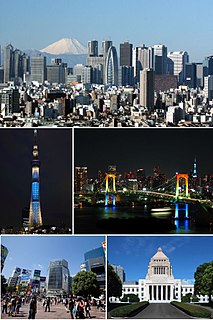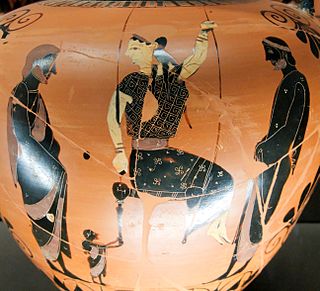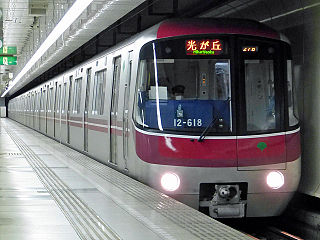
Shinjuku is a special ward in Tokyo, Japan. It is a major commercial and administrative centre, housing the northern half of the busiest railway station in the world and the Tokyo Metropolitan Government Building, the administration centre for the government of Tokyo. As of 2015, the ward has an estimated population of 337,556, and a population density of 18,517 people per km². The total area is 18.23 km². Since the end of the Second World War, Shinjuku has been a major secondary center of Tokyo (fukutoshin), rivaling to the original city center in Marunouchi and Ginza.

Nakano is a special ward in Tokyo, Japan. The English translation of its Japanese self-designation is Nakano City.

Meguro is a special ward in Tokyo, Japan. The English translation of its Japanese self-designation is Meguro City. The ward was founded on March 15, 1947.

Suginami is a special ward in Tokyo, Japan. The ward refers to itself as Suginami City in English.

Itabashi is a special ward located in Tokyo Metropolis, Japan. In English, it calls itself Itabashi City. Itabashi has sister-city relations with Burlington, Ontario, in Canada; Shijingshan District of Beijing in the People's Republic of China; and Bologna in Italy.

Nerima is a special ward in Tokyo, Japan. The ward refers to itself as Nerima City.

Adachi is a special ward located in Tokyo Metropolis, Japan. It is located north of the heart of Tokyo. The ward consists of two separate areas: a small strip of land between the Sumida River and Arakawa River and a larger area north of the Arakawa River. The ward is bordered by the cities of Kawaguchi, Sōka and Yashio in Saitama and Katsushika, Sumida, Arakawa, and Kita in Tokyo. The ward is called Adachi City in English.

Ikebukuro is a commercial and entertainment district in Toshima, Tokyo, Japan. Toshima ward offices, Ikebukuro station, and several shops, restaurants, and enormous department stores are located within city limits.

Kita is a special ward located in Tokyo Metropolis, Japan. The English translation of its Japanese self-designation is City of Kita. The ward was founded on March 15, 1947.
The Tokyo Metropolitan Government Board of Education is the board of education in Tokyo, Japan. The board directly manages all of the public high schools in all 23 special wards, the Western Tokyo, and all islands under Tokyo's jurisdiction. This list is incomplete/needs updating: 2018 Jan 21.

Toshima is a village located in Ōshima Subprefecture, Tokyo Metropolis, Japan. The village comprises the whole of To-shima Island.

Tokiwa-sō was an apartment building in Toshima, Tokyo, Japan famous for being the early living-quarters of many prominent manga artists.

Ochiai-minami-nagasaki Station is a railway station located at the Nishi-Ochiai itchōme intersection of Mejiro Dōri, Shin-Mejiro Dōri and Shin-Ōme-Kaidō in Shinjuku, Tokyo, Japan. This station is served by the Toei Ōedo Line. The Station number is E-33.

The Toshima clan was a Japanese samurai clan prominent in the Kamakura and Muromachi periods of Japanese history in the northwest of what is today Tokyo. The clan was based primarily in Shakujii castle, in what is today Shakujii Park in the town of Shakujii, in Nerima-ku, until the fall of the castle in the late 1470s to Ogigayatsu Uesugi clan vassal Ōta Dōkan.

Toshimaen (としまえん) is an amusement park in Nerima, Tokyo, Japan, owned by the Seibu Group. It has a variety of rides, including three roller coasters, and a water park with 25 slides and six pools.

The Toshima Incineration Plant (豊島清掃工場) is a incineration plant located in Kami-ikebukuro, Toshima, Tokyo, Japan. It covers an area of 12,000 square meters and has two incineration units with a combined capacity of 400 tons of waste per day.

Mejiro-no-Mori is a public wooded area in Toshima Ward, Tokyo, Japan. Officially, it is not a public park, but a "forest for the residents of the ward" as designated by Toshima Ward. It is open throughout the year.

Minami-Nagasaki Sports Park is a public park in Toshima Ward, Tokyo, Japan. It is the largest public park in Toshima Ward. The total park area includes the area of the Minami-Nagasaki Sports Center building and the football pitch. The area of the grassy section of the park excluding the football pitch is about 3,204 m2.























